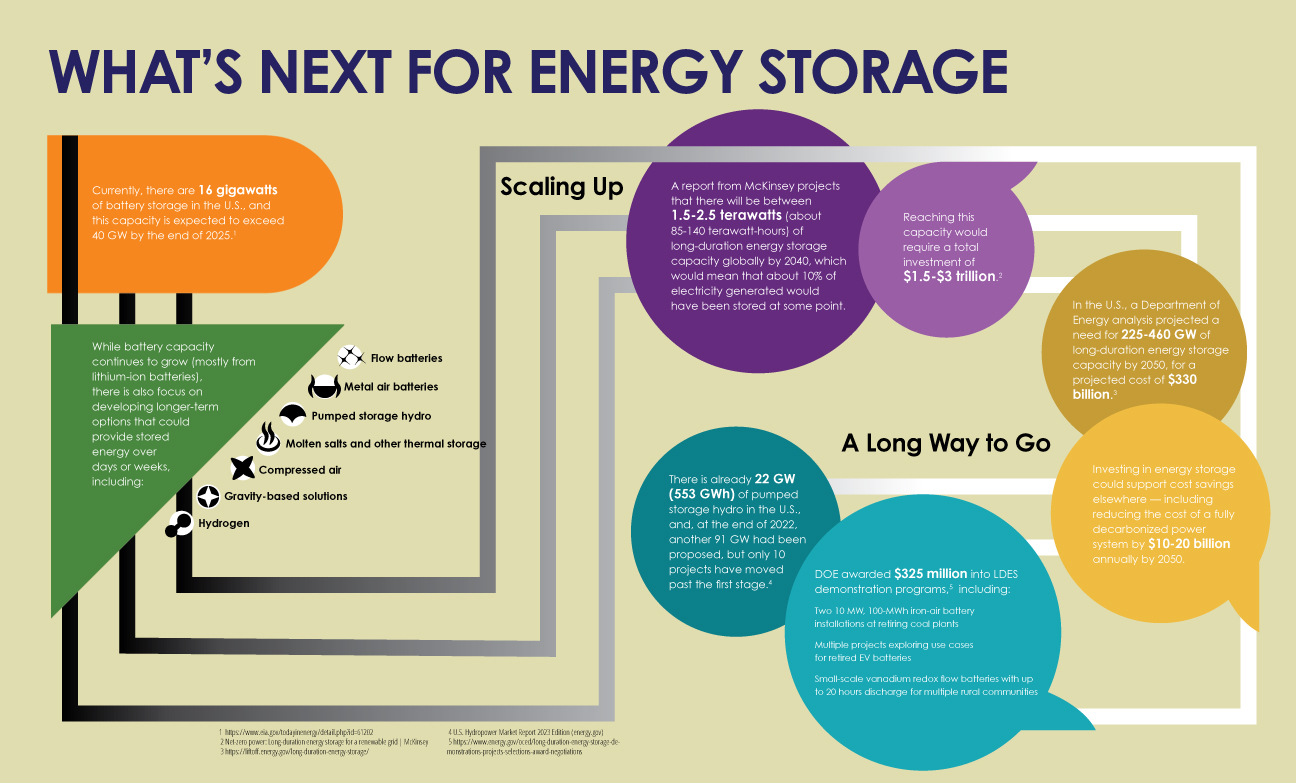Currently, there are 16 gigawatts of battery storage in the U.S., and this capacity is expected to exceed 40 GW by the end of 2025.
While battery capacity continues to grow (mostly from lithium-ion batteries), there is also focus on developing longer-term options that could provide stored energy over days or weeks, including:
- Pumped storage hydro
- Flow batteries
- Metal air batteries
- Compressed air
- Molten salts and other thermal storage
- Gravity-based solutions
- Hydrogen
Scaling Up
A report from McKinsey projects that there will be between 1.5-2.5 terawatts (about 85-140 terawatt-hours) of long-duration energy storage capacity globally by 2040, which would mean that about 10% of electricity generated would have been stored at some point. Reaching this capacity would require a total investment of $1.5-$3 trillion.
In the U.S., a Department of Energy analysis projected a need for 225-460 GW of long-duration energy storage capacity by 2050, for a projected cost of $330 billion.
Investing in energy storage could support cost savings elsewhere — including reducing the cost of a fully decarbonized power system by $10-20 billion annually by 2050.
A Long Way to Go
There is already 22 GW (553 GWh) of pumped storage hydro in the U.S., and, at the end of 2022, another 91 GW had been proposed, but only 10 projects have moved past the first stage.
DOE awarded $325 million into long-duration energy storage demonstration programs, including:
- Two 10 MW, 100-MWh iron-air battery installations at retiring coal plants
- Multiple projects exploring use cases for retired EV batteries
- Small-scale vanadium redox flow batteries with up to 20 hours discharge for multiple rural communities


